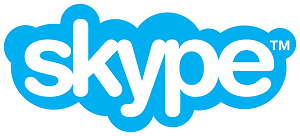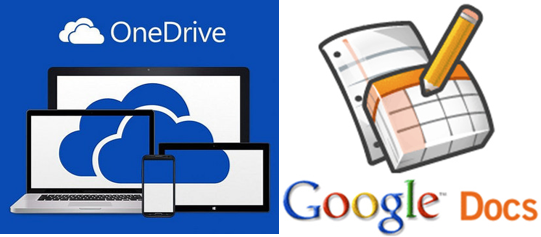|
Module VII: Small Group Communication Addendum 1: Working in Groups Online After completing this addendum, students should be able to:
With the constant connectivity of the internet and easily available video conference tools, more and more task group work is being accomplished online. Instead of the time and cost required to bring a group together, members can join the group from work, from home, or from anywhere they have internet access. Online task groups have the same basic dynamics as face-to-face groups with some slight variations. We will look at some tools and techniques to aid online task groups in functioning effectively.
Because of the concepts of copresence and media richness theory, we know the most effective communication occurs face-to-face, in the same room at the same time. With online groups, however, such a physical presence is not possible. Instead, as best we can, we work to replicate the face-to-face environment.
Copresence is the degree to which we are aware of the other person, and how “present” they are, psychologically and physically, in the encounter (Atlschuller & Benbunan-Fich, 2010). Consider how present we are in a face-to-face encounter compared to something like texting or even a phone call. The more we are aware of and feel involved with the other person, the better we communicate. In online communication, we aim for virtual copresence, using various technologies to mimic the face-to-face encounter as much as possible. While we can never achieve pure copresence, we can aim to get as close as possible. Media Richness Theory tells us that different forms of communication have more message data and, therefore, result in a fuller, more detailed communication event. (Schiefelbein, 2012) Face-to-face communication is the richest form of communication there is. Think of how much we learn about a person when we can hear and see them as compared to how little personal information we get from an email or a text. With online task groups, meeting face-to-face is not practical, but we want to replicate that data-rich face-to-face experience as best we can. Relationships build more effectively because we get far more information in this richer mode to allow us to lower uncertainty, build predictability, and develop trust more quickly. Video Conference ToolsWhile there is a myriad of high-powered video conference tools exist for video conferencing, we will focus on the free ones readily available to students. The challenges, however, apply to any platform a group may use.
By far the most common video conference service is Skype. Skype allows for free group calls up with up to twelve members, and it allows the user to see all other members at the same time. There are similar tools such as Google Hangouts, and with the ever-expanding internet, other options come and go at a regular pace. Regardless of which tools a group uses, some things to keep in mind:
Other Communication ToolsIn addition to video conferencing, other communication tools are certainly appropriate to use in order to stay connected. Which tool works best for your group is up to the group; perhaps a discussion board is best, or texting, or Facebook messaging. As long as the group agrees on the tools to use, and uses them as expected, whatever works for the group is fine.
Since all groups, whether online or face-to-face, must eventually produce something, the group needs a method to do so that will allow for collaboration but also ease completing the product. Two tools that excel at this are Google Docs and Office 365. Either of these tools allows all members of a group to collaboratively edit documents, slideware presentations, spreadsheets, or a number of other items. With revision tracking and commenting features, both are robust tools for group collaboration. One benefit of Google Docs is it is free and not dependent on having access to Office 365. The ideal scenario is for members to have their video conference window open, along with the collaboration tool. Group members may then see and hear each other, discuss the task, while creating and editing the work the group needs to produce. This arrangement for allows for virtual copresence in a media rich environment, which in turn sets the stage for healthy interaction.
Successful task groups must be managed thoughtfully and purposefully. There are distinct things groups can do to be more successful. These are choices, they do not just happen. The members must decide to make the group work.
For any task groups to function effectively, each member must be engaged and take responsibility for making the group work. For online groups, those needs are even greater due to the challenges of not being in a face-to-face setting. However, through the use of video conferencing and other collaborative tools, a group can create an effective work environment.
The terms and concepts students should be familiar with from this section include: Virtual Copresence Being Successful with Online Groups
Altschuller, S., & Benbunan-Fich, R. (2010). Trust, performance, and the communication process in ad
hoc decision-making virtual teams. Journal of Computer-Mediated Communication, 16, 27-47.
International Communication Association.
Bormann, E.G., & Bormann, N.C. (1980). Effective small group communication (3rd ed.) Minneapolis, MN: Burgess Publishing Company.
Fisk, A.P. (2013), The inherent sociability of homo sapiens. Human Sociality. Retrieved 4/1/13 from http://www.sscnet.ucla.edu/anthro/faculty/fiske/relmodov.htm
Fournier, G. (2010). Social exchange theory. Retrieved 3/22/13 from http://psychcentral.com/encyclopedia/2009/social-exchange-theory/
Schiefelbein, J. (2012). "Media Richness and Communication in Online Education." Facultyfocus.com
Retrieved 4/1/13 from http://www.facultyfocus.com/articles/online-education/media-richness-
and-communication-in-online-education/
|
|
| ||
| Made possible by financial support from Minnesota State Colleges and Universities and technical and staff support of Ridgewater College 2101 15th Ave NW Willmar, MN 56201 (320) 222-5200 |
Keith Green Last Updated |
 This work is licensed under a Creative Commons Attribution-NonCommercial 4.0 International License. |
|
| ||


